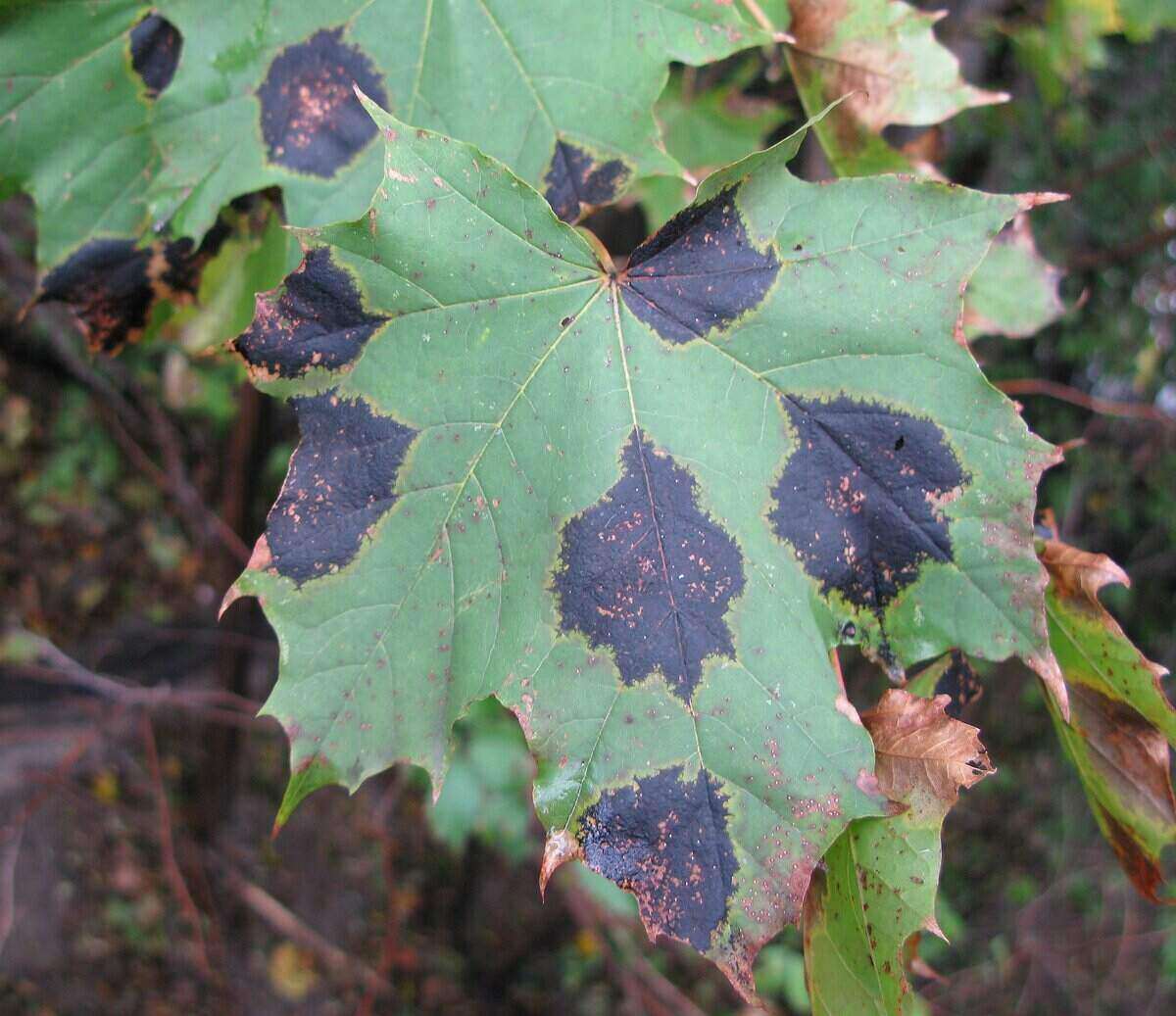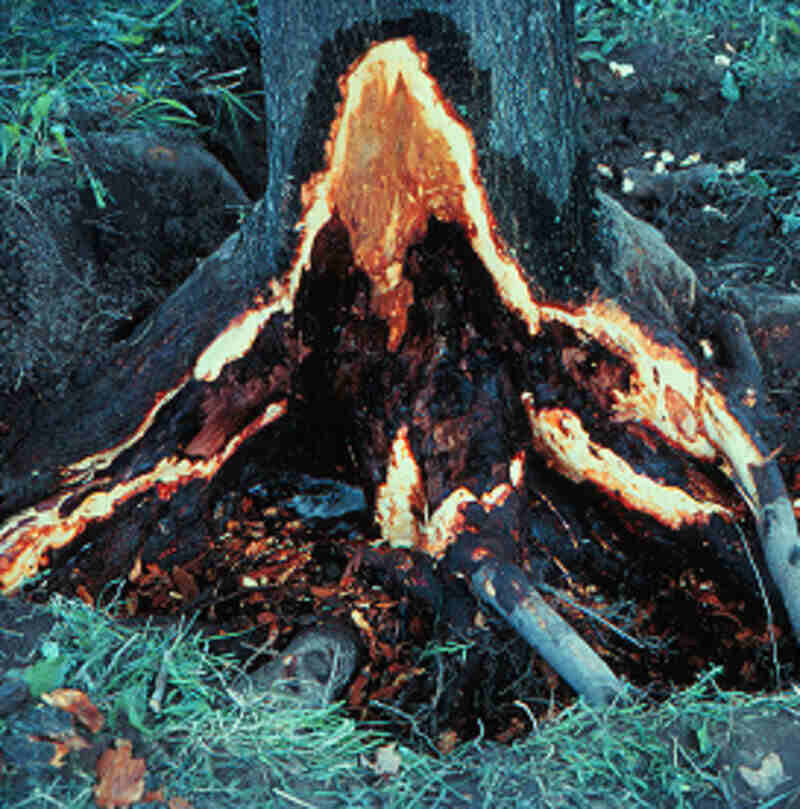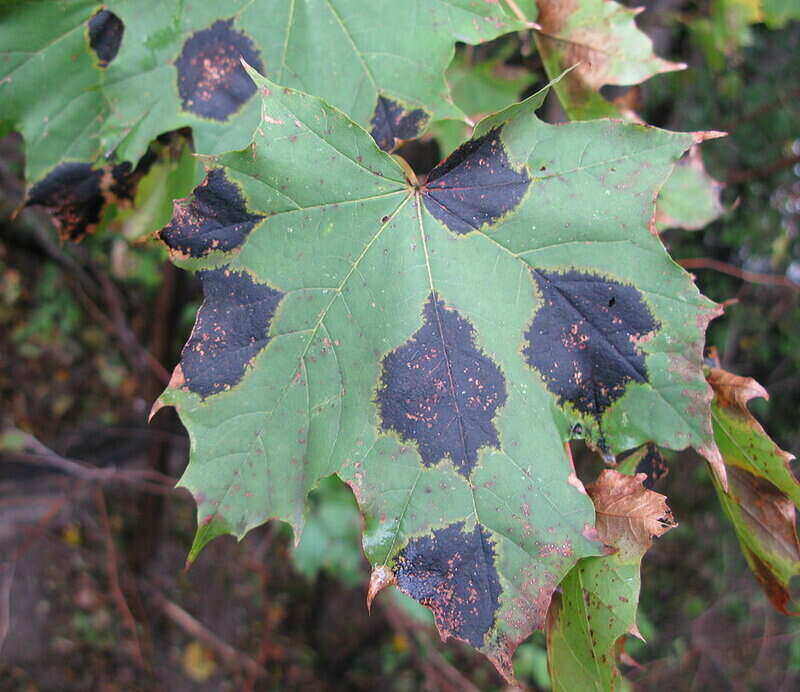
Maple trees are symbolic of strength, endurance, balance, and longevity. Unfortunately, stealthy attackers attempt to sap these trees of their splendor, but we’ll help you identify maple tree diseases and how to treat them. Perfect as specimen trees or lining a long driveway, you can’t deny their beauty and majesty.
Typically, maple trees live up to 300 years, but sometimes they fall prey to illness. These can include diseases such as tar spot, verticillium wilt, anthracnose, leaf scorch, powdery mildew, and lichen, to name a few. Treatment ranges from pruning dead branches to removing the entire tree and fumigating the soil to doing nothing at all, depending on the infection.
So, what’s ailing your maple? Let’s take a look at the eight most common maple tree diseases and how to treat them:
Maple Tree Diseases
There are as many maple tree species as Bubba Gump has ways of making shrimp: silver maples, red maples, Japanese maples, Norway maples, etc. Their scientific name is Acer of the family Sapindaceae. Maples are excellent shade trees, but unfortunately, like oaks, sycamores, and all other trees, they suffer from diseases.
The best way to keep healthy trees is the prevention of disease through proper maintenance; watering, fertilizing, and pruning. And while most maple tree diseases are purely cosmetic, a few threaten the life of the tree.
Here are some of the most common maple diseases from most to least serious:
1. Sapstreak

This maple tree disease (see picture above) can affect the bark and gets its name from the dark staining that forms in a star-shaped pattern on the rings of a tree’s chopped trunk. Sapstreak threatens sugar maples specifically, entering through damaged roots. Once inside, the sapstreak pathogen prevents water and nutrients from reaching branches and leaves.
- Symptoms: Smaller than normal leaves at the crown, discolored wood, and bald spots.
- Causes: The fungus ceratocystis virescens
- Treatment: None other than prevention by protecting roots from damage. Some trees recover; others must be completely removed.
- Season: Mostly late spring, early summer
- Risk Level: It’s high. Remove infected trees to keep the disease contained.
2. Root Rot

Most common in wet, poorly drained soil areas, root rot attacks the healthy tissues of the affected tree. This leads to a compromised vascular system; the maple is not able to receive the water and nutrients it needs to survive.
- Symptoms: Affecting the maple tree’s bark, this disease forms “fruiting structures” along the trunk and roots; in cases of Phytophthora, “bleeding” cankers appear on wood.
- Causes: The most common cause is the Phytophthora fungus; other fungal causes are Fomes, Ganoderma, and Laetiporus.
- Treatment: Total tree removal
- Season: Spring rainy season
- Risk Level: Serious. This is a fatal disease.
3. Verticillium Wilt

Verticillium wilt is a fungal infection of the soil that penetrates tree roots and attacks a maple tree’s vascular (or circulatory) system. When this happens, water and nutrients are unable to reach branches and leaves. Dead leaves will fall to the ground and the soil reabsorbs the fungal disease, potentially setting off a wider verticillium wilt infestation.
- Symptoms: Wilted, yellowing leaves on one side of the tree; stunted leaf growth and defoliation. Verticillium wilt causes discoloration in the sapwood under the tree’s bark.
- Causes: Soil-based fungus verticillium dahliae or verticillium albo-atrum
- Treatment: No cure, but some trees recover with proper care. In severe cases, remove the tree, fumigate the soil, and plant a wilt-resistant species in its place. The best treatment is prevention through proper maintenance.
- Season: Summer, typically July and August
- Risk Level: Low; most maple trees will not contract verticillium wilt. The severity of the disease can vary: Trees with a chronic infection can live a long time, while trees with an acute case die back quickly, and will need to be removed.
4. Tar Spot

While not life-threatening, tar spot is a fungal infection that affects maple tree leaves. Leaves can have one to several spots of varying sizes at a time, which may lead to premature leaf drop. Tar spot is a common disease in silver maple and red maple trees.
- Symptoms: Begins as yellow spots on leaves before turning into tar-like, black spots
- Causes: The Rhytisma fungus (R. punctatum)
- Treatment: None. Prevention is the best method; clearing away infected leaves that have fallen to the ground also lessens the chance of maple spider mites and box elder bugs hiding and multiplying in the leaf litter.
- Season: Late summer, early fall
- Risk Level: Low. Not life-threatening to the tree; only affects its appearance.
5. Anthracnose

Affecting both maple tree leaves and branches, anthracnose becomes active during wet spring conditions. Branches and leaves nearer to the ground and toward the inside of the tree are more susceptible to infection from early spring’s wet weather. Commonly, anthracnose disease affects Japanese maple trees, as well as red, sugar, and silver maple trees.
- Symptoms: Varied, depending on maple species. Includes shriveled leaves, discolored streaks on leaf veins, and curled leaves with brown spots.
- Causes: Several fungi, including Discula and Kabatiella
- Treatment: No treatment other than pruning dead branches and twigs and raking away fallen leaves.
- Season: Spring
- Risk Level: Low, cosmetic only.
6. Powdery Mildew

Different types of powdery mildew affect different types of maple trees. In every case, this maple disease is not harmful because the powdery substance sits on leaf surfaces. The root system is never invaded, and the powdery mildew fungus does not eat away at the leaves.
- Symptoms: The appearance of a white, powdery substance on leaves
- Causes: The Phyllactinia fungus
- Treatment: None needed. Save the fungicide; the fungus can be brushed off or removed with horticultural oil.
- Season: Late summer and autumn
- Risk Level: It’s low.
7. Lichen

When fungi and algae or cyanobacteria couple up to form a symbiotic relationship, a new existence called lichen is formed. Preferring moist environments, lichen thrives on tree bark and uses energy from the sun to make food. Since lichen doesn’t feed on the tree, no harm is done.
- Symptoms: A crusty, leaf-like, or tube-like growth on bark; may have a bluish tint to it
- Causes: An organism composed of fungi and algae or cyanobacteria
- Treatment: Prune affected branches; manually pull off the lichen.
- Season: Lichen can occur at any time of year.
- Risk Level: Low. Lichen does not harm the tree.
8. Leaf Scorch

Rather than a fungal, viral, or bacterial infection, leaf scorch can occur in summer when the weather is hot and dry. The tree might not be able to transport enough hydration to its leaves, so the edges begin to curl and turn brown.
- Symptoms: Dried-up leaves that turn brown.
- Causes: Hot, dry weather; low soil moisture
- Treatment: Supply irrigation and add mulch to maintain soil moisture; prune dead limbs.
- Season: Summer, particularly July and August
- Risk Level: Low; not life-threatening.
FAQ About Maple Tree Diseases
Is My Tree Dead if it has no Leaves?
While health conditions generally affect maple leaves, some common diseases can strip the tree from new leaves to bare limbs, or cause early leaf drop, but it can still live. Some maple tree diseases attack internal systems through the roots, and the trees will die a slow death.
Do Maple Trees Get Blight?
Yes. Some maples get bacterial blight. It affects mostly new leaves and twigs because they are the most vulnerable. The blight appears as oozing dark spots about ¼-inch wide, but they’re usually an irregular shape.
What’s the Best Way to Tell if my Maples are Healthy?
If you scratch a branch with a knife and it’s a nice green color, it’s probably healthy. A dark color under the bark indicates dead or decaying material. It’s a great idea to check your trees regularly to get ahead of problems.
When to Call a Certified Arborist
For cosmetic imperfections like leaf discoloration and bark growth, professional treatment is not necessary. But if your maple contracts a disease, such as verticillium wilt, root rot, or sapstreak, don’t try to DIY this job. Contact a local arborist for the best chance to save your tree and enjoy its beauty for years to come.
Main Photo Credit: Saforrest / Wikimedia Commons / CC BY-SA 3.0




